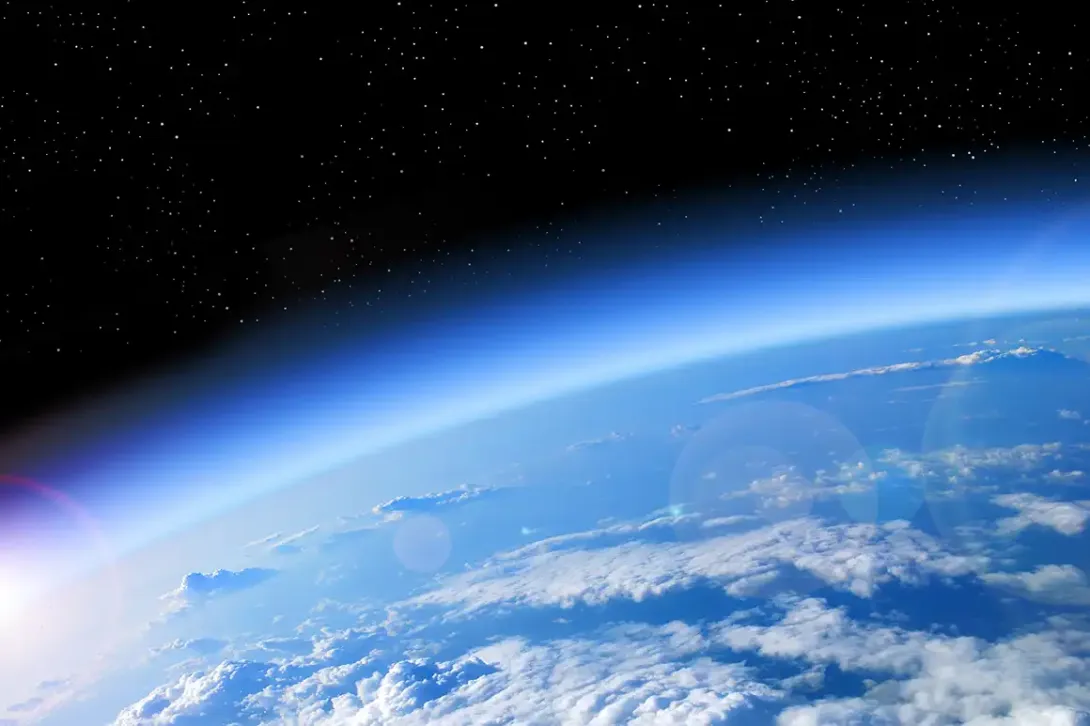
The ozone layer today. Moving towards recovery or still at risk?
For those of us who lived through the 1980s and 1990s, the threat of a hole in the ozone layer was a recurring concern. What state is the ozone layer currently in?
During the 1980s and 1990s, concern regarding the disappearance of the ozone layer was present in the daily lives of so many of us, generating alarming headlines and global debates. Now that we are in October 2025, you are probably wondering: what has actually happened to the ozone layer? Although there are several studies that confirm that the layer has been recovering in recent decades, there are still several challenges that we will have to face in the coming years.
The current status and signs of recovery of the ozone layer
Since the signing of the Montreal Protocol in 1987 and its subsequent amendments, more than 99 per cent of controlled ozone-depleting substances have been eliminated. This gradual decarbonisation of the stratosphere has allowed scientists to speak of clear signs of recovery.
According to the WMO Ozone and UV Bulletin of September 2025, that recovery is still ongoing: the ozone hole observed in 2024 was smaller than in recent years, and its severity was below the average of recent decades. As also estimated by NASA and NOAA studies, the ozone layer could reach levels similar to those seen back in 1980 by the middle of the 21st century. Specifically, the most widely accepted forecasts predict a complete recovery in Antarctica by 2066, while the Arctic may see a major improvement by 2045 and the rest of the world between 2040 and 2045.
Along these same lines, a recent study led by MIT confirms that the Antarctic ozone layer is showing signs of healing as a direct result of the global reduction in the use of ozone-depleting gases. The progress of the Antarctic hole varies with seasonal fluctuations, but in 2024 its largest surface reached approximately 21.9 million km², one of the smallest in decades.
Nonetheless, it should be noted that this recovery has not yet reached reliably stable levels. The ozone layer still presents regional variations, and at certain times areas with limited concentrations of ozone are observed, particularly at polar latitudes. Still, the scientific consensus remains optimistic: current policies seem to be enabling the ongoing recovery of the ozone layer.
Persistent challenges hindering a full recovery
Although the data might lead us to be optimistic, it is far too soon to declare victory. The road to full recovery of the ozone layer is fraught with challenges: technical, climatic and human.
For example, many of the gases that damage the ozone layer remain in the atmosphere for decades.Despite being banned in most countries, they continue to impact the stratosphere. Furthermore, illegal emissions or leaks of unregulated substances have been detected in some places, continuing to endanger the health of the ozone layer.
On the other hand, climate and weather also play a decisive role. Phenomena such as the Antarctic polar vortex, extreme temperatures in the stratosphere or volcanic eruptions can cause seasonal ozone losses. In fact, volcanoes can release gases into the atmosphere that speed up ozone depletion. Interestingly, some recent studies point out that ozone recovery can have an unexpected effect: by absorbing more ultraviolet radiation, the stratosphere could cool down and this, in turn, may affect global warming. It's a complex interaction that scientists are currently studying.
Short-term forecasts
However, if we want the ozone layer to make a full recovery, it is essential that every country should remain committed to this cause. Facing climate denialism and diminished regard for scientific consensus, it is important to note that, if any nation relaxes its controls or if new dangerous gases appear, global progress may be jeopardized. Moreover, recovery will not be the same in all regions: the tropics and subtropics may take longer to return to normal.
Even so, there is no need to be doomsayers, because there is major progress to be celebrated. If everything continues at its current rate, by the mid-21st century we could be back to 1980 levels. But we must not forget that there is still work to be done. It is necessary to continue to eliminate the older gases, control illegal emissions, monitor weather changes and not lose sight of the importance of international policies.
Therefore, far from considering the issue done and dusted, now is the time to remain active and committed: strengthening controls, continuing to fund research and keeping public awareness alive, to ensure that the recovery of the ozone layer endures and can protect us all.




